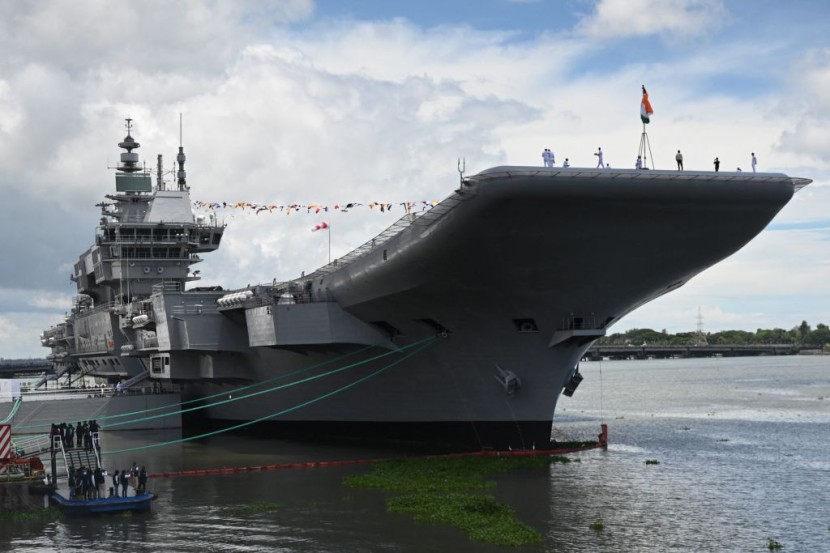
India has launched its second carrier, the INS Vikrant, but a third carrier is needed to project the power of a blue water superpower. An aircraft carrier can go on long voyages and be self-sufficient, with its battle group to support it. Few countries have aircraft carriers as a part of their naval force, and these are few countries with this capability.
India's First Homegrown Aircraft Carrier
The introduction of the first indigenous aircraft carrier, IAC-I 'Vikrant,' on September 2 will be followed by a third one to keep parity with the PLAN in the Indian Ocean, per Naval Technology.
With India's desire to develop a Blue Water Naval force that can project globally across oceans and deep waters and is a powerful force in establishing a country's supremacy, there is an increasing call for a third aircraft carrier, reported Indian Defence News.
An aircraft carrier's capacity to protect its affiliated warships, submarines, and other ships, from attacking forces is unsurpassed in terms of fighting power. Under the watchful air cover, some ships, such as frigates and destroyers, can successfully carry out their tasks of offensive attacks and other operations.
Any country is proud of the relevance of an aircraft carrier in naval jargon. Any country's pursuit of a blue water superpower is altered whenever an aircraft carrier joins the fray.
When the 45,000-ton INS Vikrant is completely combat-ready by 2023, it will increase India's maritime power and sea control capabilities.
The eastern and western seaboards need one carrier each, and the Indian Navy has long requested three carriers to ensure that at least two are operationally available while a third goes through its upkeep and overhaul cycle.
Indian Navy Needs More Than One Carrier
Due to INS Vikramaditya's comprehensive refit, the Navy has been without a deployable aircraft carrier almost for two years, noted The Hindu.
The timing is crucial because China is building two additional carriers quickly in order to control the seas after deploying its third carrier, "Fujian," in June this year.
Several carrier battle groups would be crucial to enhance India's seaborne diplomatic efforts and help ward off dangers, notably the Chinese Navy's authoritarian blue-water ambitions in the Indian Ocean Region.
When the Vikrant is ready for battle, it will aid in maintaining peace and stability in the Indo-Pacific territory.
According to Navy Vice Chief Vice Admiral Satish N Ghormade, a carrier will serve as the necessary deterrence, considering our maritime capability's sturdiness and our neighbors' increasing strength.
Former Deputy Chief Vice Admiral M. S. Pawar reiterated the requirement for a third carrier, declaring that the Indian Navy is very evident regarding its objectives.
Why is China moving so quickly with its carrier proposals if carriers are no longer applicable? They plan to build a dozen carriers in the coming decade. As a result, the Indian Navy necessitates not only a third carrier but also one that is larger and better than the current ones.
India should put the knowledge and skill set obtained from this venture, including the vast ecosystem, in place to use in the long term. Completing its third carrier, the INS Vikrant, another will follow to become a blue water superpower in time.
Related Article : China Successfully Tests for Hypersonic Communication at Mach 5+ Speeds
© 2025 HNGN, All rights reserved. Do not reproduce without permission.








